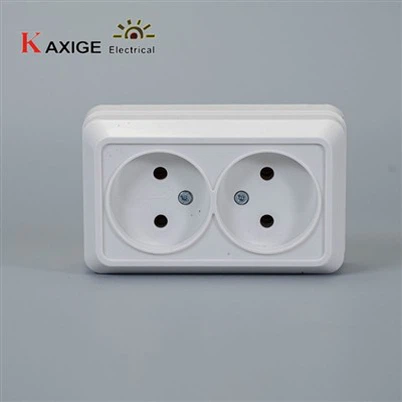What is the contact material in an electric switch?
Leave a message
Hey there! As an electric switch supplier, I've been in the game for quite a while, and one question that comes up a lot is, "What is the contact material in an electric switch?" Well, let's dive right into it.
First off, the contact material in an electric switch is super important. It's what makes the connection that allows electricity to flow through the switch, and it has to be able to handle the current without wearing out too quickly or causing any problems. There are several types of materials that are commonly used for switch contacts, and each has its own pros and cons.
One of the most popular contact materials is copper. Copper is a great conductor of electricity, which means it allows electricity to flow through it easily. It's also relatively inexpensive and easy to work with, so it's a common choice for many types of switches. However, copper has one big drawback: it tends to oxidize over time. Oxidation is when the copper reacts with oxygen in the air to form a layer of copper oxide on the surface of the contact. This layer can increase the resistance of the contact, which means that more energy is lost as heat, and the switch may not work as well.
To overcome this problem, many switches use copper contacts that are coated with a thin layer of another metal, such as silver or gold. Silver is an even better conductor of electricity than copper, and it doesn't oxidize as easily. Gold is also a great conductor, and it's extremely resistant to oxidation. Coating the copper contacts with silver or gold can help to reduce the resistance of the contact and improve the performance of the switch.
Another common contact material is tungsten. Tungsten is a very hard and durable metal, and it has a high melting point. This makes it ideal for use in switches that are exposed to high temperatures or high currents. Tungsten contacts are often used in industrial switches, such as those used in heavy machinery or electrical equipment. However, tungsten is also a relatively expensive metal, so it's not as commonly used in consumer switches.
In addition to copper, silver, gold, and tungsten, there are several other materials that can be used for switch contacts. For example, some switches use carbon contacts. Carbon is a good conductor of electricity, and it's also very resistant to wear and tear. Carbon contacts are often used in low-voltage switches, such as those used in electronic devices.
So, how do you choose the right contact material for your electric switch? Well, it depends on a few factors. First, you need to consider the application of the switch. If the switch is going to be used in a high-temperature or high-current environment, you may want to choose a contact material that is more resistant to heat and wear, such as tungsten. If the switch is going to be used in a low-voltage or low-current environment, you may be able to get away with using a less expensive contact material, such as copper or carbon.
You also need to consider the cost of the contact material. As I mentioned earlier, some materials, such as tungsten and gold, are more expensive than others. If cost is a major factor, you may want to choose a contact material that is more affordable, such as copper or silver.
Finally, you need to consider the performance requirements of the switch. If the switch needs to have a very low resistance and a high level of reliability, you may want to choose a contact material that is a good conductor of electricity and is resistant to oxidation, such as silver or gold.


At our company, we offer a wide range of electric switches that use different contact materials. Our 73B Dimmer Switch uses high-quality copper contacts that are coated with silver to ensure a low resistance and a long lifespan. Our 73B Switch and Socket Combination also uses copper contacts with a silver coating, and it's designed to be both durable and easy to use. And our 73B 2 Gang Switch with Lamp Indicator uses tungsten contacts for added durability and reliability.
If you're in the market for electric switches, we'd love to hear from you. Whether you're a contractor, an electrician, or a homeowner, we have the right switch for your needs. Our switches are made from high-quality materials and are designed to meet the highest standards of performance and reliability. So, if you're looking for a reliable and affordable electric switch, give us a call or send us an email, and we'll be happy to help you find the right switch for your application.
In conclusion, the contact material in an electric switch is an important factor that can affect the performance and lifespan of the switch. Copper, silver, gold, and tungsten are all common contact materials, each with its own pros and cons. By choosing the right contact material for your application, you can ensure that your switch will work properly and last for a long time.
References
- Grob, Bernard. "Basic Electronics." McGraw-Hill Education, 2007.
- Boylestad, Robert L., and Nashelsky, Louis. "Electronic Devices and Circuit Theory." Pearson, 2013.






